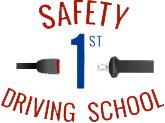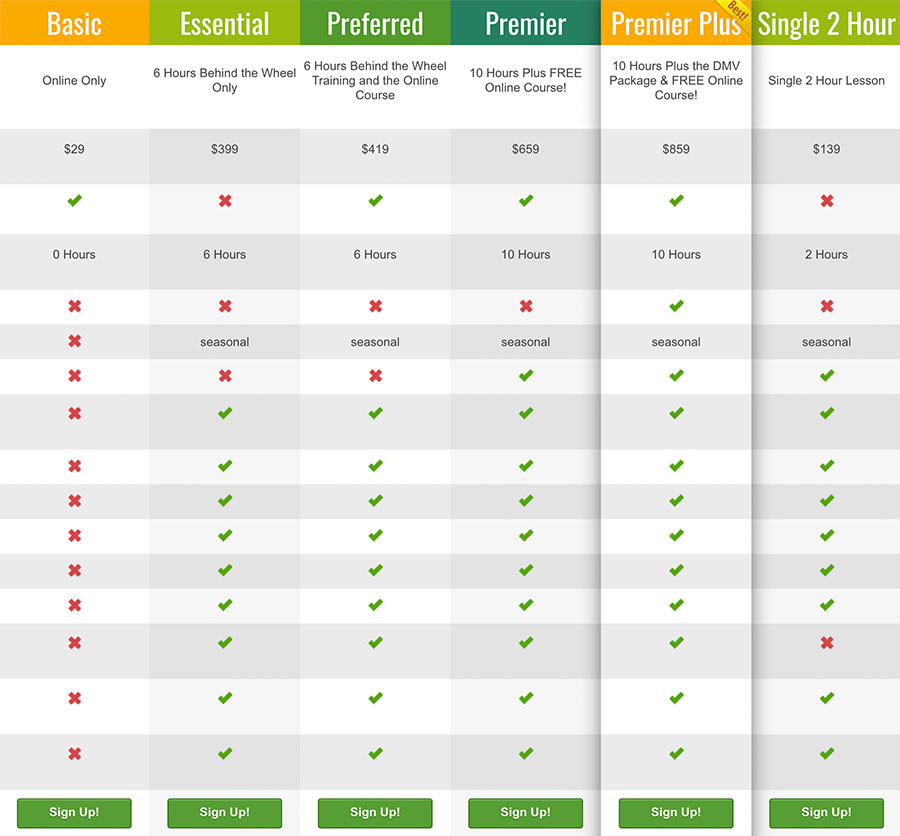New drivers and student drivers are often very focused on themselves and other drivers – what they should be doing on the road, what they shouldn’t be doing, etc. We’re not saying that’s a bad thing, but there’s more to skilled, defensive driving than just worrying about yourself and other drivers. For instance, the passengers in your car can become a distraction. Teenagers in particular have a tougher time driving properly and safely with other teenagers in their car. (Parents, you might want to consider limiting the amount and frequency of passengers that ride along with your teenage driver.)
Today we are going to focus on safely driving among pedestrians and bicyclists.
We at Safety 1st Driving School cannot stress enough how important it is to be on the lookout for pedestrians, bicyclists, and skateboarders. Especially here in Orange County, where people are able to be outdoors year-round.
Imagine yourself pulling out of a shopping center parking lot. The street you are turning onto only allows right-hand turns. You look to your left, waiting for oncoming traffic to pass. Once it’s clear, you take your foot off the brake. Obviously no traffic is coming from the other direction, because you’re only allowed to turn right. So no need to look right…right? Not so fast! In the two seconds it took you to prepare to step on the gas pedal and complete your right turn, a kid on a skateboard has zoomed up on your right and is ready to cross in front of you.
It can happen THAT fast and you MUST be ready.
Here are some tips to keep EVERYONE on the road safe.
Pedestrians
Pedestrians always have the right of way. ALWAYS. Period.
Even if they’re not paying attention, YOU MUST. Even if they’re jaywalking, or crossing when the flashing red hand says “Don’t Cross,” they still have the right of way. It’s not their job to watch for you, it’s your job to watch for them. Just accept it.
- FULLY stop at all stop signs and look for pedestrians, bicyclists, or skateboarders.
- Check your mirrors when you’re stopped. They can zoom up from behind pretty quickly.
- SLOW DOWN at crosswalks, even when you have the green.
- Make a mental note of pedestrians with headphones on, or using their cell phones. They may be more likely to cross when they’re not supposed to.
- Obey the speed limit.
- NO TEXTING or other distractions. Most texters take their eyes off the road for 3-5 seconds to send or receive a single text message. Do you think that’s long enough for a pedestrian to cross your path? You betcha! (The “other distractions” category includes talking on your cell phone, messing with your radio, and anything else that takes your attention off the road.)
Bicyclists
For some reason, many Orange County drivers are immediately annoyed when they see a bicyclist. Perhaps some of their annoyance would be alleviated if they knew the laws cyclists must follow.
Did you know…
- In California, bicyclists may ride on certain segments of the freeway.
- Bicyclists must ride with traffic. Riding against traffic is not permitted.
- Bicyclists should not ride on sidewalks. They should ride on the road, close to the curb.
- When making a right or left turn, bicyclists must use the appropriate turn lanes.
ALL THE RULES MENTIONED ABOVE APPLY here too. Plus this one:
Stay out of the bike lane. If you are preparing to turn right and must cross into the bike lane, check your mirrors and take a quick look over your shoulder to be sure you’re not cutting off a cyclist.
Obey the rules of the road. Be proactive, alert, focused, attentive, and patient.
Let’s make Orange County a better place – one safe driver at a time!


